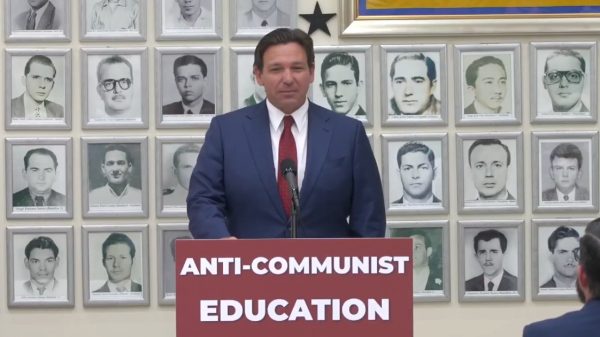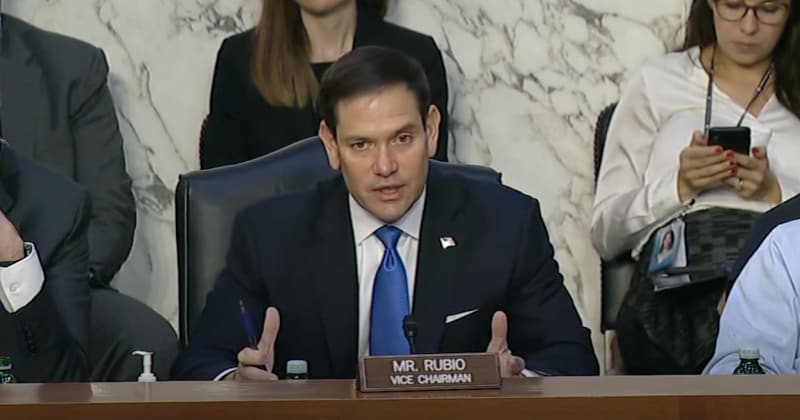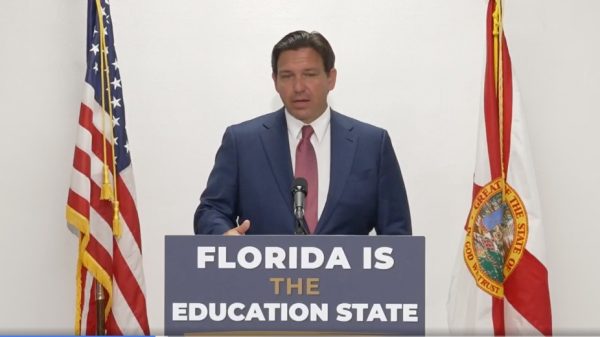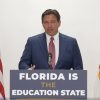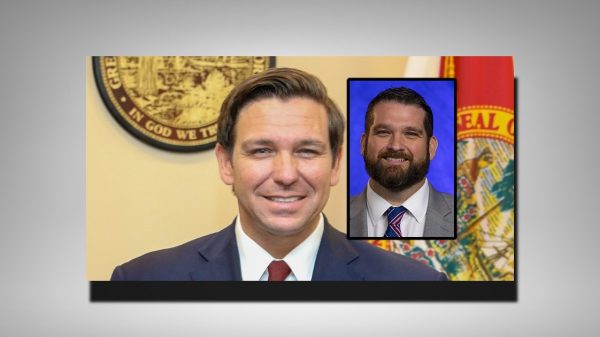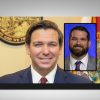Last week, U.S. Sen. Marco Rubio, R-Fla., sent a letter to Gov. Ron DeSantis outlining measures that, if adopted, could allow Florida student athletes to safely return to high school sports this fall.
Rubio’s proposal is based on a review of protocols created by states, youth sports organizations, and the National Collegiate Athletic Association (NCAA), with guidance from leading public health authorities and experts. The letter follows a conversation the senator and governor had on the subject on Wednesday. The letter was sent on Thursday.
The full text of the letter is below.
Dear Governor DeSantis:
Returning to high school athletics has generally been treated as a mere afterthought in the national debate over returning to school this fall. As it has always been, the safety and wellbeing of our student-athletes must be the top priority. This means protecting them from the dangers posed by COVID-19, but also protecting them from the significant socio-developmental harm of not being allowed to return to play.
A recent national survey of high school athletes by UW Health and the University of Wisconsin School of Medicine and Public Health provides some startling and troubling findings. That study revealed 68 percent of the more than 3,200 student-athletes surveyed reported depression and anxiety at levels that would normally require medical intervention.
The risk of contracting and spreading COVID-19 during athletics is legitimate and must weigh on any decision of when, and how, to return to sports. However, the impact of not being able to play is legitimate as well. Therefore, the goal should be to find a way forward that both mitigates against the risk of infection and allows student-athletes to be able to return to the field.
Below is a proposal for returning to sports based on my review of various protocols created by numerous states, youth sports organizations and the NCAA, with guidance from leading public health authorities and experts. I have tailored this proposal specifically to high school football, since it represents the highest risk event of the fall season. A similar stringent protocol could also be created for girls’ volleyball, while bowling, cross-country, golf, swimming and diving are considered lower risk events, but also need protocols reflecting those high school athletes’ needs.
These protocols do not guarantee that zero infections will occur among student-athletes, coaches or game officials. However, if adhered to, this protocol represents the best realistic practices available to us right now to significantly mitigate against the risk of infection and spread during competition.
Any effective strategy to mitigate against the spread of a contagious disease must be centered on the mechanism by which the disease is acquired and spread. It is now widely accepted that while surface contact may pose a risk of infection, the leading mechanism by which COVID-19 is spread is via human-to-human contact. Therefore, while measures such as disinfecting game balls and other equipment is recommended, they are not included in this proposal since schools are already planning to undertake those measures.
The risk of spreading COVID-19 is at its highest via:
-
-
- Prolonged close contact of 15 minutes or more;
- In an indoor setting; and
- Crowded and/or poorly ventilated spaces.
-
Florida high school football is played outdoors, on naturally well-ventilated fields. Therefore, the protocol below is designed to focus on the risk posed by repeated close contact between players, coaches and officials during a game.
As an additional caveat, this protocol is designed to protect participants that do not have underlying health conditions placing them at higher risk of severe symptoms, hospitalization and death from COVID-19. While not included in these recommendations, additional measures and restrictions should be considered for coaches and game officials over the age of 65, as well as for those participants with underlying health conditions that place them at a higher risk. Those conditions include:
-
-
- Chronic kidney disease.
- COPD (chronic obstructive pulmonary disease).
- Immunocompromised state (weakened immune system) from solid organ transplant.
- Obesity (body mass index of 30 or greater).
- Serious heart conditions, such as heart failure, coronary artery disease, or cardiomyopathies.
- Sickle cell disease.
- Type 2 diabetes mellitus.
-
The proposal below aims to reduce the risk of infection via two lines of defense: identifying and removing participants who may be infected with COVID-19, and limiting viral shedding by those infected through distance and masking practices adapted to the game of football.
-
- Prevent infected persons from participating:
Every student-athlete and all athletics personnel should be screened before participating in any aspect of in-person athletics activities. No one should be allowed to officiate, coach or play if they identify or exhibit any of the following symptoms or signs within 72 hours before competition:
-
-
- Shortness of breath or difficulty breathing
- Cough or other respiratory symptoms
- Headache
- Chills
- Muscle aches
- Sore throat
- Congestion or runny nose
- New loss of taste or smell
- Nausea, vomiting or diarrhea
- Pain, redness, swelling or rash on toes or fingers (COVID toes)
- New rash or other skin symptoms
- High-risk exposure: a new contact with an infected individual or prolonged contact with a crowd without physical distancing (for example, attended a party in which there was no masking or physical distancing)
- Temperature of 100.4° Fahrenheit or above
-
-
- Testing:While broad PCR and Antigen testing within 72 hours of each game would be ideal, doing so for high school athletics is not currently cost effective. Antibody testing is less costly and provides faster results, however, it is not recommended as the primary way to diagnose infection. Because those infected begin producing IgM Antibodies within 3 to 7 days of infection, rapid antibody tests do provide 4 possible results that could be of some utility in identifying those who are potentially infected:
-
-
- A result with both IgM and IgG negative: Indicates the patient has never been infected with COVID-19 or is still in the three to seven day incubation period.
- IgM is positive, but IgG is negative: The patient is having an early phase, active COVID-19 infection.
- IgM is positive, but IgG is negative: The patient is having an early phase, active COVID-19 infection.
- Both IgM and IgG are positive: The body has an active COVID-19 infection and is trying to build up protection against it.
- IgM is negative, but IgG is positive: The patient has recently been infected with COVID-19 and may now have some level of protection against COVID-19.
-
-
- Notification: A school shall be required to notify their previous opponent if any player on their roster tested positive or is otherwise suspected of COVID-19 infection within five days after the game with that opponent.
-
- Return to play Protocols:
Athletes with a confirmed infection and mild to moderate illness or asymptomatic, (i.e., managed at home), must, before being cleared to return.
-
-
- Be at least 10 days past the date of initial COVID-19 positive result if not symptomatic; or be 10 days past last symptoms and at least 72 hours since last fever without the use of fever reducing medicines;
- Be cleared to return after an evaluation or routine pre-participation exam, including a symptom screen;
- Undergo an Electrocardiogram if indicated by evaluating physician;
- Undergo any other follow-up workup as indicated by physician.
-
Athletes with a confirmed past infection and severe (hospitalization) or ongoing cardiovascular symptoms must, before being cleared to return.
-
-
- Be at least 10 days past the last symptoms and 72 hours since last fever without the use of fever reducing medicines;
- Undergo a medical evaluation for clearance;
- Undergo a cardiology consult, including electrocardiograph;
- Blood troponin test in 48 hours after exercise and echo-cardiogram if indicated;
- If indicated, undergo additional cardiac tests such as cardiac MRI, Holter, stress test, chest X-ray, spirometry, pulmonary function tests, d-dimer and chest CT.
-
LIMIT VIRAL SHEDDING
It is now well established that physical distancing and universal masking are the most effective strategies for preventing COVID-19 viral shedding and spread. While neither can be practiced perfectly in a football setting, measures can be taken to substantially reduce the risk of transmission during outdoors competition:
-
-
- Physical Distancing Practices for Football Games
-
-
-
- The team box should be extended on both sides of the field to the 10 yard line;
- Require social distancing of six feet at all times while in the team box.
- Extend the two-yard sideline belt to five yards where feasible.
- No sharing of towels or equipment between players.
- Water break timeouts should be extended to three minutes in length specifically to allow more time for re-hydration.
- The authorized conference for water break and all charged time-outs should take place between the nine-yard marks and not at the sideline. (It would be permissible for more than one coach to be involved in this conference and for technology to be used.)
- Each game official and player should have their own beverage container.
- Add five seconds to the play clock, do not allow offensive and defensive huddles and require coaching staffs to utilize other methods of communication with players (such as signals, cards, signs) to minimize grouping.
- For the coin toss, limit attendees to the referee, and one designated representative from each team, in the center of the field, with all participants at least 6 feet apart and no handshakes prior to or following the coin toss.
- All pregame responsibilities should be performed by maintaining six feet distance with all officiating crew, game administration staff, line-to-gain crew, clock operators, and individuals handling the balls during the game and team personnel.
- Pre-game, quarter, half-time and post-game meetings should occur outdoors, socially distant.
- No post game hand shaking or interactions between opposing teams.
- Limit access to sidelines and field exclusively to players, coaches, game officials and crew, training and medical personnel and one accredited member of the media and one photographer providing pool coverage for all outlets.
-
-
- Masking Requirements
-
-
- All players must use approved plastic shields covering the entire face, either integrated into the facemask or attached to the helmet and clear without the presence of any tint. These shields are designed to limit and/or prevent the outward projection of respiratory droplets during coughing, sneezing, heavy breathing, or grunting. They must be products which the helmet manufacturer has certified will retain the helmets National Operating Committee on Standards for Athletic Equipment certification and schools are responsible for confirming with the manufacturer of their helmets before deciding to purchase or add a face shield product. Helmet manufacturer Schutt, has developed a face shield and another manufactured by Oakley that is being used by the NFL for Riddell helmets.
- Student-Athletes must use mouth guards in their mouth throughout competition as currently required.
- After each series or when returning to sideline, each team’s training staff must provide an individual method for a player to take out the mouth guard for proper disinfection prior to reinsertion and for hands to be disinfected with an approved disinfectant before doing so.
- All players, coaches, game officials and line to gain crew must have a cloth or gaiter style face covering. They must be worn at all times by coaches, team staff and all game administration officials. Players must either have their helmet with face shield or gaiter style mask on at all times during the competition.
- All medical, training or other team staff must use medical quality FDA approved PPE masking (i.e. N95 masking) when treating a player on the field or on the sidelines.
- Strongly encourage providing game officials with electronic whistles or other similar device whose tone will carry outside and be heard clearly by players on the field of play. This could ultimately be required based on availability.
- Each player, coach and game official must have their own beverage container that is not shared.
- Gloves are permitted for all coaches and team staff and for all game administration officials.
- Officials must avoid limit handling of other officials’ equipment (ex. assist in picking up flags or bean bags).
- All game official huddles must be no longer than 30 seconds in duration and practicing appropriate distancing.
- Each team will assign one member of the coaching, training or support staff to enforce the masking and distancing guidelines.
- Game officials shall have the authority to penalize repeated violations of any of the masking or distancing rules as they would an equipment or sideline violation, by removing a player from the field for non-compliance, or by issuing a 5-yard penalty for on-field or sideline violations after one warning.
- These distancing and masking requirements are designed on the basis of best practices for non-athletic interactions. Because we currently do not have a well-established risk assessment for “prolonged exposure” and “close contact” in the context of football and sports, it is impossible to guarantee how much these practices would reduce the risk of infection. However, there is general agreement that adhering to these protocols would reduce the risk when compared to competition without them.
-
In closing, we should all recognize this is a time of tremendous uncertainty and disruption. The recommendations I have laid out would represent a substantial change from what anyone is accustomed. Nevertheless, it is also clear that if our student-athletes are to return to competition this fall, it must be pursuant to a “new normal” that mitigates against the risk of infection.
I expect those involved in high school athletics may wish to add to or modify these protocols. I hope these recommendations prove helpful in furthering our common goal of getting our student-athletes on the field this fall.








